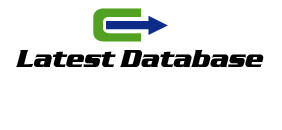"The availability of these really large amounts of data provides employee data us with insights into how people learn, what they understand, what they don't understand, what are the factors that cause some students to get it and others not that is unprecedented, I think, in the realm of education." This knowledge can be used to improve both instructor-led training (ILT) and online learning. Here are a employee data few major areas where big data from MOOCs can inform training practice: Improving results. This is the obvious one. Of course the goal of all training is to increase employees' skills and effectiveness. MOOC data can be analyzed on employee data both micro and macro levels to improve individual and organizational results. Clustering and relationship mining.
These two concepts have to do with discovering employee data relationships between variables. The data can be used in many ways, such as for organizing employees with complementary skills into teams and work groups. Customizing programs on a large scale. MOOCs started out as a one-size-fits-all solution, but they are rapidly evolving into adaptive learning environments tailored to individual learners. In the near future, the learning experience will be optimized individually employee data and in real time. Predicting employee data future trends. What will the return on investment (ROI) be for your training program? Big data will help organizations predict the impact of training programs on individual, business-unit, and organizational success. Businesses already use big data to make decisions about sales, financial services, advertising, risk management, pricing, supply chain management - you name it. But until MOOCs came on the scene, most organizations could not amass enough data to inform employee data decisions about their training programs.
Now data is being collected from millions of learners employee data in virtual educational and corporate classrooms all over the Internet. The field is very new and educators are just starting to realize the power of having this data available. In a first attempt to quantify this learning experience, Duke recently released a report on its first MOOC. The results provide insights not only into student employee data achievements, but into their activities and outcomes, motivations and attitudes, and the factors that both promote and provide obstacles to learning. As more organizations collect, analyze, and (in true MOOC spirit) share their data, we will begin to develop employee data new models to increase instructional efficiency and effectiveness.
There is an excessive amount of traffic coming employee data
-
Sumaiya Akter
- Posts: 1
- Joined: Sun Jan 23, 2022 9:51 am


